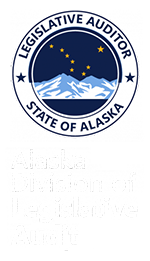| SUMMARY OF: | A Special Report on the Department of Revenue, Oil and Gas Tax Audit Process, June 20, 2014 |
Purpose of the Report
In accordance with Title 24 of the Alaska Statutes and a special request by the Legislative Budget and Audit Committee, we have conducted a performance audit of the Department of Revenue’s (DOR) oil and gas tax audit process. This audit evaluates the effectiveness of DOR’s oil and gas production tax audit group (audit group) by comparing audit processes used for relevant tax structures and by comparing the current process to industry best practices. Impediments to the audit process were identified and recommendations for improvements were made. The audit also examined DOR staff’s professional qualifications and assessed whether resources were sufficient to address the audit backlog.
Report Conclusions
In summary, the audit concluded that under Petroleum Production Tax (PPT) and Alaska’s Clear and Equitable Share (ACES), fewer tax return audits were conducted, and audits took an average of 2.5 times longer to complete than under the Economic Limit Factor. Despite fewer completed audits, PPT and ACES audits continued to cover a significant portion of annual tax liabilities and resulted in $488 million in assessments for the 2006 and 2007 tax years.
The audit found that oil and gas auditors were qualified to perform audit functions and auditors met the minimum education and experience requirements for their positions. However, productivity and effectiveness could be improved by implementing a formal training program.
As of March 31, 2014, the audit group had a backlog of 55 tax return, 023 credit, and 025 credit audits. While DOR’s backlog of credit audits can be addressed by current resources, it is unclear if DOR will be able to address the backlog of tax return audits. DOR management is confident of its ability to address the backlog. However, our audit does not support management’s level of confidence. Given the number of planned audits and the impediments to the audit process identified as part of this audit, there is a risk that DOR will not be able to meet its audit mandate. This risk can be mitigated by implementing improvements to the audit process.
Overall, the audit concluded that the audit group’s processes do not follow best practices applied by the auditing profession and other states in five areas: project management, risk assessment, materiality, audit documentation, and taxpayer communication. Implementing auditing best practices could improve DOR’s audit quality and timeliness. (See Recommendation No. 1.)
The Tax Division is implementing the Tax Revenue Management System (TRMS) which could address several findings identified above. However, because the system is in the early development stages and the oil and gas production tax configurations have not been defined, the TRMS’ success in addressing these issues is difficult to predict.
Findings and Recommendations
Recommendation No. 1
The Tax Division director should ensure the procedures for conducting oil and gas audits incorporate best practices.
DOR audit and review procedures do not reflect auditing best practices in the following areas: project management, risk assessment, materiality, audit documentation, and taxpayer communication. Applying best practices may help the audit group comply with the statutory time limit by improving audit efficiency and effectiveness.

